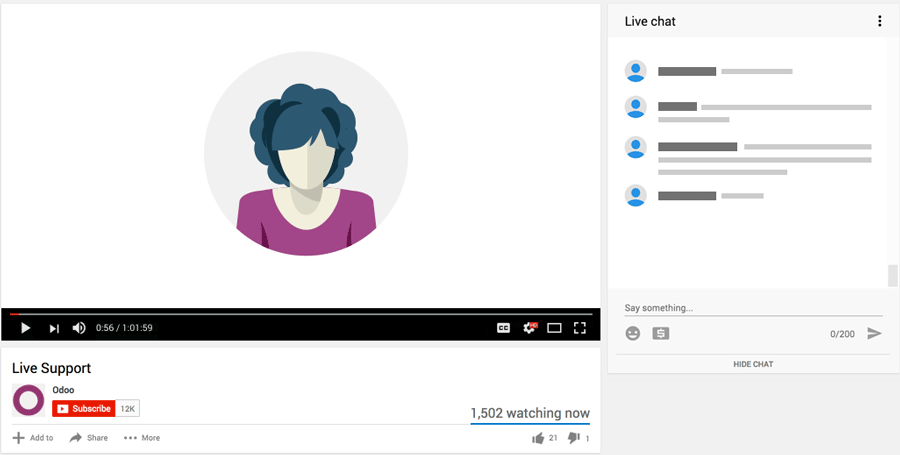From Santiago, Chile, Caxtor has found in Odoo the perfect partner to take its operations to the next level. What began as an urgent need to leave behind manual processes and limited software has now become a story of efficiency, integration, and forward-looking vision. With more than 25 employees, the company has managed to reduce costs, optimize time, and improve cash flow thanks to the implementation of key Odoo modules.
Caxtor defines itself as a B2B consultative sales company, focused on delivering differentiated energy and signaling solutions for each client. Its offerings include solar energy projects, LED lighting, and visual aids for air and maritime navigation. The ability to manage and timely administer customer contacts is fundamental to its strategy: knowing when to approach with a proposal and how to build trust-based relationships.
In particular, the company has distinguished itself with its line of solar lights for small aerodromes, complemented by more advanced aeronautical signaling solutions for large airports. This combination of innovation and adaptability has allowed it to grow steadily in a competitive market.
Founded in 2011, Caxtor literally started on the dining table of a shared apartment. Its first opportunity was representing a factory that gave them product distribution for cell towers and antennas, which require safety signaling mandated by aeronautical regulations. Initially, they offered solar lights but quickly evolved by incorporating batteries, solar panels, and LED crowns, paving the way for new business areas that today cover much of the country.
"Our three most critical elements are energy, signaling, and lighting."

The Roadblocks before the right ERP

During the first years, Caxtor could operate with basic methods like notebooks and Excel spreadsheets. However, when the team exceeded five people, they were forced to implement a CRM: Salesforce. Although it fulfilled its function, the high cost and inability to scale to more users and modules represented a major limitation.
With growth came other problems. Salespeople did not only sell: they also picked up products at customs, prepared delivery notes, invoiced, and collected payments. This model became nonviable when the team exceeded 20 people and handled a larger volume of transactions.
Invoicing was a critical point: confirmed quotes had to be manually entered into the Internal Revenue Service system, generating frequent errors and credit notes. In an attempt to reduce the workload, they hired a freelancer to issue invoices, which brought some relief but did not solve the root problem: duplicated work, internal miscoordination, and an unsustainable process. “We issued a lot of credit notes. That’s when we realized the problem: the system was more cumbersome and complicated than it should have been,” recalls Smith.
Odoo: A Turning Point for Caxtor

Faced with this scenario, the company began evaluating alternatives, including Softland, SAP Business One, HubSpot, and Salesforce again, but none offered a comprehensive solution tailored to their needs. It was during this search that they discovered Odoo.
Implementation began in 2021, and since then Caxtor has deployed a wide range of apps: Sales, Accounting, Purchase, Inventory, CRM, Expenses, Contacts, Project, Documents, and currently is advancing in Manufacturing and Workshop. They have also explored modules such as Appointments and Marketing, although their use is still limited.
The first thing the team noticed was the full integration: every movement is immediately reflected in reports. A salesperson can instantly know if a product is available in inventory or needs replenishment. This eliminated the anxiety of depending on calls, emails, or visits to the warehouse.
In addition, every confirmed quote is automatically linked to purchase orders and inventory, optimizing the process and preventing stockouts of critical products. The system even allows configuring automatic replenishment tasks, reducing operational workload and ensuring business continuity.
Another key benefit has been the ability to generate dynamic Excel reports to analyze, for example, which customers haven’t purchased in the last six months, improving sales planning and retention.
In terms of human resources, efficiency is tangible: the entire administration and finance system, including domestic and import purchases, is now managed by just two people.
Finally, the financial impact has been significant. Before Odoo, Caxtor suffered losses due to duplicate purchases and overstock. With integration, inventory control is precise, translating into greater liquidity and better cash flow.

"Since implementing Odoo, there has been a noticeable and strong change in our ability to generate results, and that is reflected directly in the balance of our bank accounts."
What’s Next For Caxtor

The next big step is to strengthen commercial reporting to measure results more accurately and support the sales force in achieving success. The company is also advancing in the implementation of the manufacturing and workshop module, with the goal of assembling and producing its own equipment with quality controls that will even allow exports in the short term.
Similarly, they are working on using the contacts module to manage their portfolio and retain long-term clients, understanding that in their industry, repeat sales and trust are more valuable than one-off transactions.
Caxtor’s experience shows that Odoo not only solves management problems but enables companies to grow with efficiency, control, and strategic vision. Energy, signaling, lighting companies, or any sector handling complex processes, can find in Odoo the platform to scale operations without losing agility.

